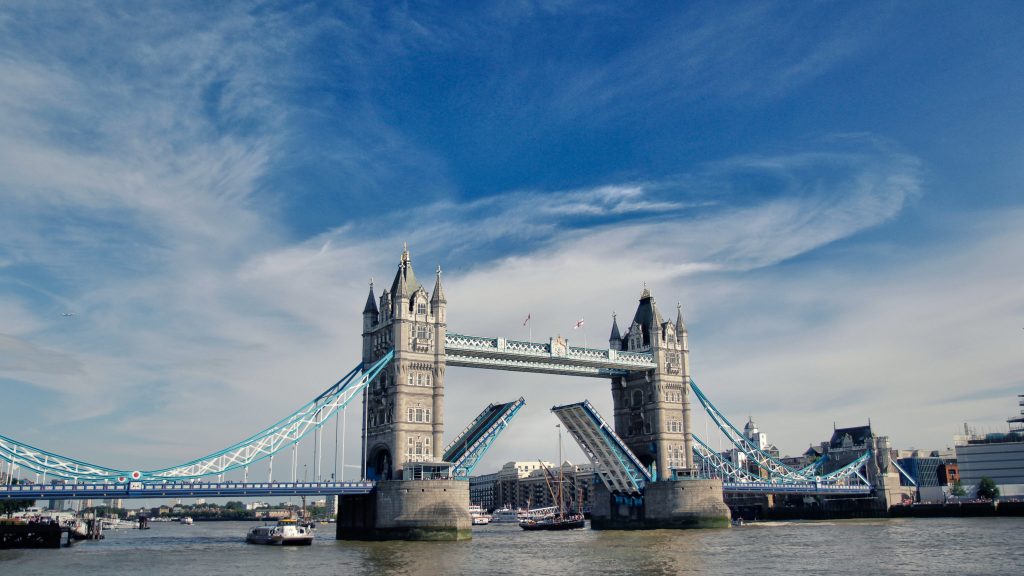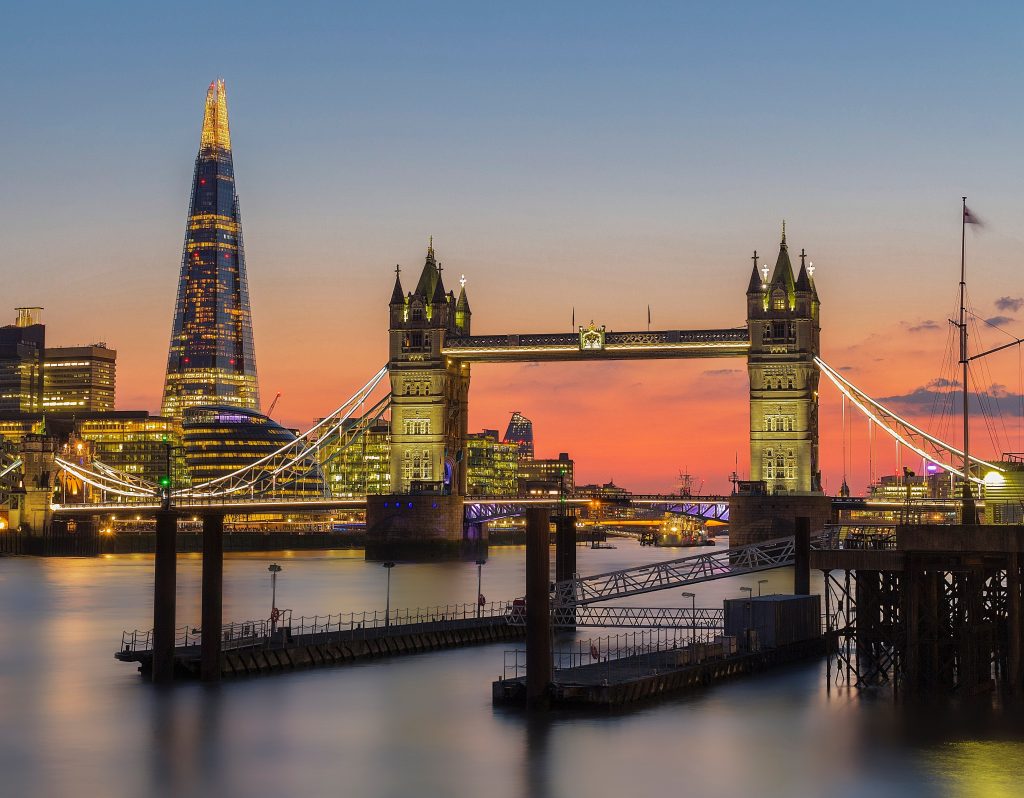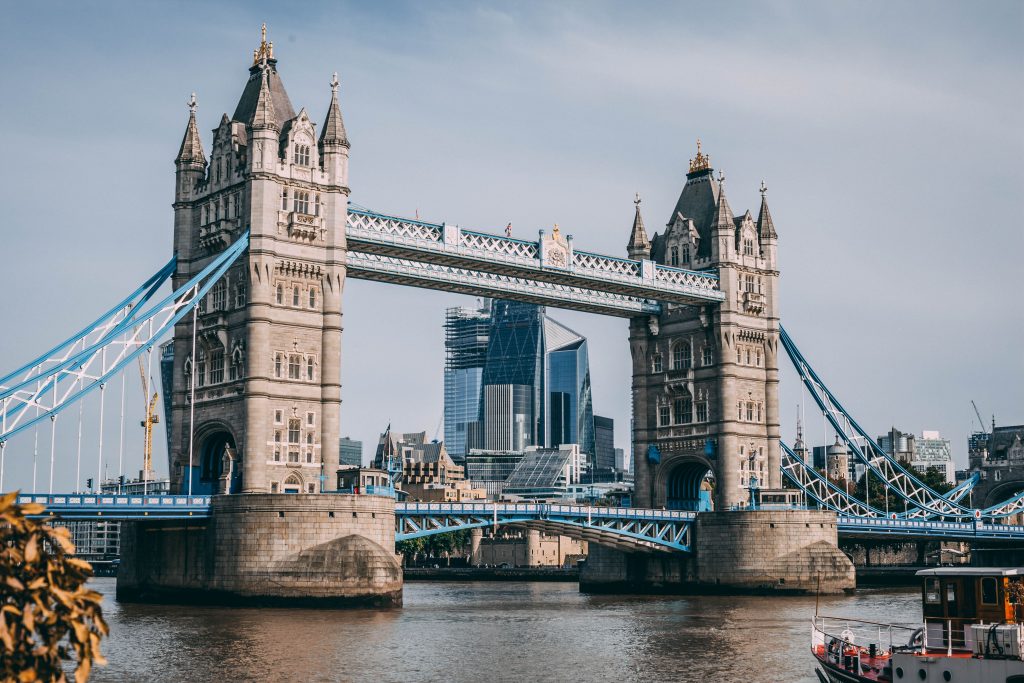Table of Contents
One of London’s greatest architectural marvels, Tower Bridge is noted for its unique Victorian or Neo-Gothic style of architecture. As the name suggests, it comprises two towers connected with two walkways and is situated near the Tower of London. Often confused with the London Bridge, the Tower Bridge is considered far more iconic and picturesque by both residents and tourists alike. It was constructed in the late 19th century with the initial idea of increasing access to the eastern part of London. In 1894, it was inaugurated by the then Prince of Wales, King Edward VII. Around 240 metres long, 76 metres wide, and 65 metres high, Tower Bridge, London is one of the most majestic monuments of the world and attracts over 5,00,000 visitors every year. Here is a compilation of the most fascinating Tower Bridge facts that you probably didn’t know.
#1 History
Historical facts about Tower Bridge are as interesting as they are crucial to fathom the efforts and past of this monument. For the design, a competition was held by the City of London Corporation in 1876. More than 50 designs were submitted, many of which are still on display at the bridge itself. However, the Corporation wasn’t satisfied with any of these, until 1884 when the design by architect Sir Horace Jones and chief engineer Sir John Wolfe Barry was picked. Sir Horace Jones also designed some of the most iconic places in London like the Leadenhall Market, Smithfield Market and Billingsgate Market. Sadly, he did not live long enough to see his masterpiece finished and died in 1887, about seven years before the completion of the bridge.
11,000 tonnes of steel was used to build the framework which was later clad in cornish granite and portland stone. Finally, on 30th June 1894, the Prince of Wales along with his wife inaugurated the Tower Bridge. It is a pivotal moment in the history of London since before the bridge was opened, people used the Tower Subway, which functioned under the Thames.
#2 Resources
An addition to some of the astounding Tower Bridge facts, its construction cost well over one million pounds at that time, which is equivalent to about 15 crore pounds according to the 2019 data. More than 1000 construction workers with different skills in steelwork, carpentry, painting, and much more, were hired. In terms of material, 11,000 tonnes of steel and 70,000 tonnes of concrete were used to build the foundation, whereas 31 million bricks and 2 million rivets were also used.
#3 The Bascules
The two sections in the central span of the Tower Bridge are called the Bascules, derived from the French word for ‘see-saw’. Weighing over 1000 tonnes each, huge caverns were built underneath the Bridge to counterbalance each of their weights. These counterweights swing in the caverns in order to operate the Bridge. Today, special tours are held to visit these chambers. Because of the incredible acoustics, musical concerts are also held occasionally. Until 1974, these bascules or walkways were operated using huge hydraulic pumps which were powered by coal-burning steam engines. Some of these original steam machines are on display within the Tower Engine Room.
#4 The Lift

The coal-burning steam engines were later replaced by an electro-hydraulic system which takes only five minutes to raise the bascules, and in turn, the Bridge. On June 30, 1894, the Tower Bridge was lifted for the first time, along with its inauguration. There are a couple of fun Tower Bridge facts associated with its iconic first lift. A two-minute initial delay was reported, the first time it was lifted. In its first year, the bascules were raised over 6000 times or an average of 17 times every day. Even today, they are raised around twice every day.
Also, the first vessel to ever pass through the Tower Bridge was the Harbour Master’s vessel ‘Daisy’, followed by a procession of several honorary vessels. The last three of these were depicted in William Lionel Wyllie’s painting ‘Opening of Tower Bridge’, which is now on display at the Guildhall Art Gallery.
#5 The Walkways
Over 42 metres up in the sky, the walkways were a smart addition to ensure that the pedestrians could still cross the Bridge even if the bascules were being lifted. However, as time went on, they became a common spot for prostitutes and pickpockets to gather. Also because most people didn’t bother to climb the stairs and chose to wait for the bascules to be lowered instead, the walkways were finally closed in 1910.
#6 Jump Over The Bascules
One of the most mind-boggling Tower Bridge facts is that it was once opened while a bus was on it. On December 30, 1952, a double-decker bus driven by Albert Gunter, was crossing the Bridge when it suddenly started to open. Realising that his options were scarce, Gunter decided to leap. He gunned his foot to the floor and quite marvellously, made it to the other side with everyone in the bus safe and sound. He was awarded £10 and the next day off for his bravery and quick presence of mind.
#7 Flight through the Bridge

Here is another addition to the list of adventurous Tower Bridge facts. In 1951, Frank Miller, after being challenged by his 13-year-old son, flew a plane through the Tower Bridge. Although the dare got him 35 shillings, it also cost him a £100 fine in court.
#8 London Olympics 2012
One of the most pivotal parts of the city’s history, Tower Bridge was the highlight of the 2012 Olympics held in London. The Olympics rings were suspended from the walkways, adorning the Bridge. Also, the movie sequence, ‘Happy and Glorious’ featuring Daniel Craig’s James Bond and ‘The Queen’, was shot at the Bridge and screened during the opening ceremony. It depicted them travelling to the Olympics stadium in a helicopter and also featured footage of the helicopter passing through the middle of the Tower Bridge.
#9 Lego
The largest Lego structure ever built was the Tower Bridge. Over 13 metres high, this version was built for the launch of the New Discovery car by Land Rover. It took a team five months to build the entire structure, consisting of 58,05,846 bricks of Lego. Arguably one of the most interesting Tower Bridge facts, the number of Lego bricks is so high that if laid end-to-end, they would span the distance between the Tower Bridge and Paris, which is over 200 miles or 321 km.
#10 Shades

Originally, it used to be a deep shade of chocolate brown till the late 1970s. When the Queen’s Silver Jubilee was celebrated in 1977, the Bridge was repainted in red, blue and white colours to commemorate her journey. Again, between the period of 2008 to 2016, several renovations and reconceptions took place, a result of which are the white and bright blue shades that adorn the Bridge today.
#11 Right Of Way
Despite around 40,000 people using the Bridge every single day, ships have the right of way. According to the Tower Bridge Act of 1885, no ship can be charged to pass through. All they need to do is submit a notice of over 24 hours stating their timings, and once done, everyone has to wait until the ship passes. Quite famously, Bill Clinton had to once wait for more than 20 minutes in 1997, for the sailing of a barge – one of the surprising Tower Bridge facts.
FAQs
1. Why is the Tower Bridge so famous?
The Tower Bridge is famous because it’s one of London’s most striking monument with beautiful Neo-Gothic architecture. Also when it first opened, it was the most sophisticated bascule bridge in the world.
2. Why was the Tower Bridge built?
The Tower Bridge was built in the late 19th century to ease road traffic while maintaining river access to the pool of London docks.
3. How long did it take to build the Tower Bridge?
Its construction took around 8 years.
4. Who controls the Tower Bridge?
The Bridge is owned by the ‘Bridge Houses Estates’, a charity established by the Royal Charter in 1282 by the City of London Corporation.
5. What is under the Tower bridge?
The Bascule Chambers under the Tower Bridge were built as an operational area to allow the movement of the Bridge’s huge counterweights used during Bridge Lifts.
Thank you for reading our compilation of the facts on Tower Bridge! Let us know your favourites in the comment section below.
If you enjoyed reading this blog, check out similar ones on our website –











0 Comments